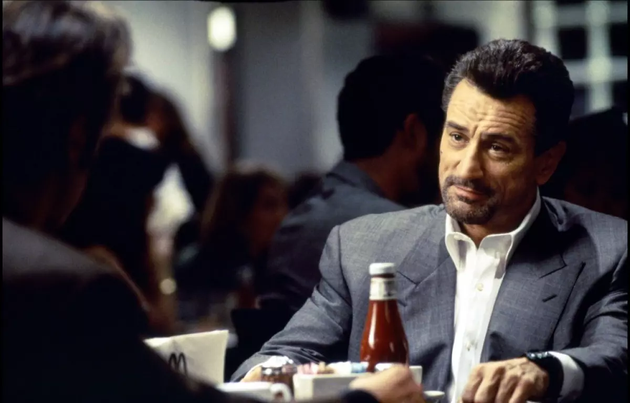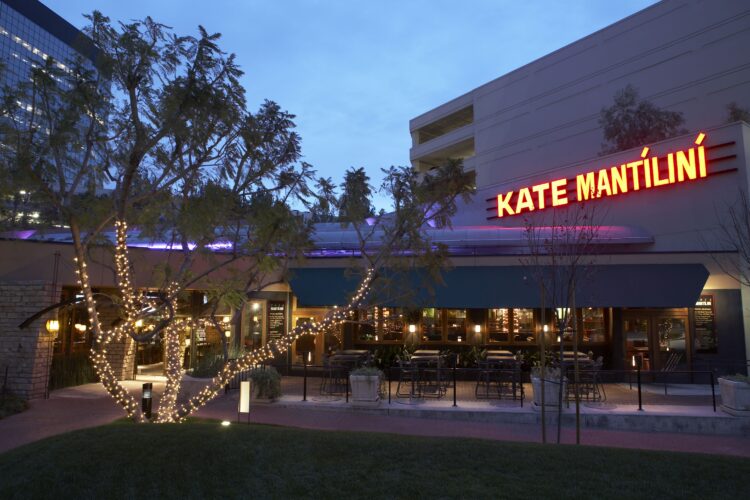In the illustrious realm of cinematic collaborations, few meetings are as iconic as the coffee shop rendezvous between Robert De Niro and Al Pacino in the film Heat. This pivotal scene, etched into the annals of movie history, takes place in a nondescript Los Angeles diner where two acting titans share the screen in a rare and unforgettable encounter. Released in 1995 and directed by Michael Mann, Heat is a crime drama masterpiece that boasts an ensemble cast of extraordinary talent. Yet, it is the electrifying dynamic between De Niro and Pacino that steals the spotlight, culminating in the coffee shop conversation that cinephiles cherish.
In the wee hours of a Beverly Hills morning, the stage was set at Kate Mantilini, a renowned industry haunt near the Academy’s headquarters. Three cameras strategically positioned—two over the shoulder, one in profile—captured a moment that would etch itself into cinematic history. This was no ordinary film shoot; it was Michael Mann’s Heat, and the protagonists were none other than Al Pacino and Robert De Niro, finally sharing the screen after decades of anticipation.
The setting is simple—a dimly lit diner with the ambient hum of chatter and the clinking of coffee cups. As Neil McCauley (De Niro), a seasoned criminal, sits across from Lieutenant Vincent Hanna (Pacino), a tenacious and relentless detective, the tension is palpable. The air crackles with the weight of their shared history, their paths converging in a moment that transcends the narrative. What makes this scene legendary is not just the stellar performances of De Niro and Pacino but the sheer anticipation built over decades. Despite both actors appearing in “The Godfather Part II” (1974), they never shared a scene together due to the film’s dual timelines. “Heat” marks the first time these giants of the silver screen truly collide.
Mann, known for his multi-camera approach, deemed three angles essential for this encounter. The resulting scene would become the focal point of Heat, Mann’s meticulously crafted crime drama revolving around the cat-and-mouse game between Hanna and the elusive criminal McCauley across the sprawl of Los Angeles.
The film, a rich portrayal of two compelling characters, unfolds as the cinematic realization of a story that had gripped Mann for years. Mann’s upcoming release, Heat 2, promises to trace the characters’ lives before and after the events of the original film. Yet, within this expanded universe, one moment remains eternally defining: the coffee shop scene. This intimate exchange is a milestone in the careers of these acting legends. For the first time since “The Godfather Part II,” where they never shared a scene, the duo delivers a one-of-a-kind master class, showcasing their unparalleled chemistry.
The coffee shop rendezvous is a delicate dance of ideologies, as Hanna and McCauley psychoanalyze each other amidst the clinking of cups and the ambient buzz of the restaurant. Dressed in dark suits, their mirrored postures amplify the tension, culminating in a chilling exchange of vows to kill each other if fate demands. Mann’s directorial finesse, using over-the-shoulder shots to focus on the actors’ faces, intensifies the emotional depth of the scene. The dialogue is sharp, the nuances profound, as De Niro and Pacino engage in a verbal duel that explores the duality of their characters. The coffee shop serves as a crucible for the clash of ideologies, where the line between right and wrong blurs, and the audience is left to ponder the complexities of morality.
Mann’s meticulous direction and the powerhouse performances elevate the coffee shop scene from mere dialogue to a symphony of acting prowess. The chemistry between De Niro and Pacino is magnetic, and their interaction becomes a masterclass in the art of subtlety and restraint. The movie stands as a testament to the enduring brilliance of De Niro and Pacino, and the coffee shop scene is a jewel in the crown of their cinematic collaborations. As the credits roll, the echo of their meeting lingers, leaving an indelible mark on the hearts of film enthusiasts who witnessed the convergence of two legends over a cup of coffee.
The conversation transcends professional rivalry, delving into the personal lives and dreams of the characters. Mann’s favorite part of the scene is the dream exchange, a glimpse into Hanna and McCauley’s most intimate thoughts. This moment, laden with symbolism and philosophical musings, becomes a microcosm of Mann’s personal philosophy encapsulated in Pacino’s delivery. Heat also serves as a time capsule, capturing the essence of an era in adult, big-budget cinema that seems increasingly elusive today. The film’s unexpected influence on Christopher Nolan’s “The Dark Knight” speaks to its enduring impact, paving the way for a new wave of bold, gritty movies in the superhero genre.
As “Heat” continues to age like fine wine, Mann, De Niro, and Pacino resist glorifying The Scene as myth. Instead, they reminisce about it as old friends would—acknowledging it as a special moment in their storied careers. The chemistry and shared history between De Niro and Pacino remain the beating heart of “Heat,” solidifying its status as an instant classic. In Mann’s words, “These are the only two guys like each other in the universe.”
*The views and opinions expressed on this website are solely those of the original authors and contributors. These views and opinions do not necessarily represent those of Spotter Up Magazine, the administrative staff, and/or any/all contributors to this site.

